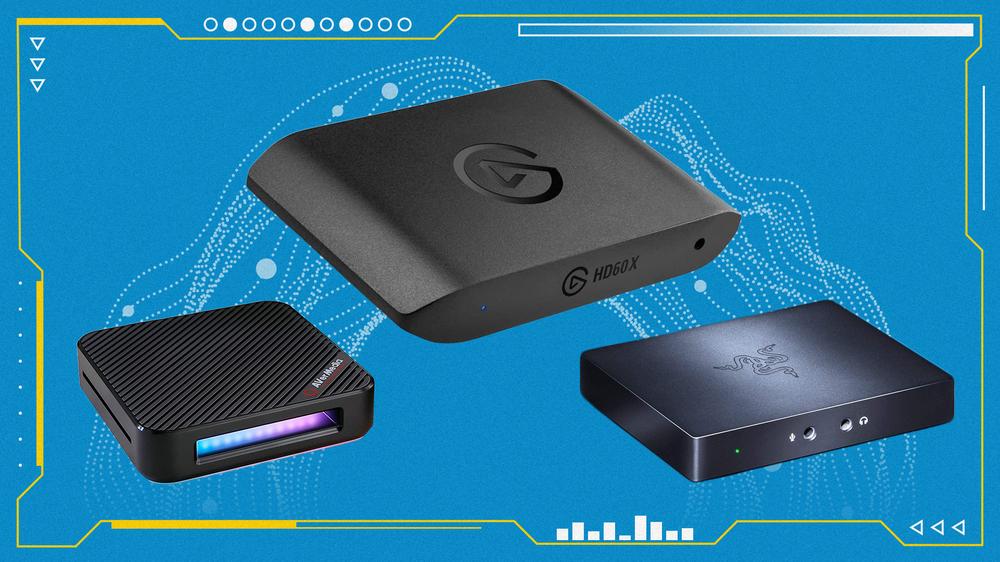If you’ve ever wanted to record your gameplay, stream live to your followers, or create high-quality video content, a capture card is practically a must. These handy little boxes allow you to capture video from one device, like a console, camera, or gaming PC, and then stream or record it on another. While some of those devices might come with built-in recording capabilities, a good capture card adds extra flexibility, ensures solid footage quality, and more.
TL;DR – These Are the Best Capture Cards:
There are, of course, some exceptions. If you’re only recording and streaming on a single, top-tier gaming PC equipped with a great Nvidia or AMD GPU, everything needed for a high-quality capture experience will be at your fingertips. However, it will put a good amount of demand on the computer, leading to potential performance drops. In some cases, offloading some of the work to a capture card can significantly improve your gaming performance and footage.
Capture cards are especially popular among gamers, streamers, content creators, and even video professionals, thanks to how great they can make footage look. There isn’t a one-size-fits-all capture card either, so we’ve found the best options for a range of uses from reputable brands like Elgato, AVerMedia, Asus, and more. Want 4K at 144fps passthrough with VRR and HDR to ensure games play exactly as intended on PS5? You’re covered. 4K at 30fps HDR recording is also becoming more common, even if it’s overkill for Twitch streamers. Some highly capable budget options are available, and if you’re looking to set it and forget it, we've found internal capture cards that can live inside your PC. All of our picks are easy to use and work with popular capture software like OBS (which is also free!). Take a look at our favorites below.
Additional contributions by Kevin Lee and Georgie Peru
Best Capture Card
Best Budget Capture Card
Best Capture Card for Consoles
Best Capture Card for PS5
Best Capture Card for Xbox
Best Capture Card for Streaming
Best USB-C Capture Card
Best Internal Capture Card
Best Internal Capture Card for Streaming
Best Capture Card with an Interface
If you’re ready to take your content creation to the next level, you’ll need to know how to pick the best capture card.
The first thing you’ll need to think about is your needs and setup. Are you primarily a PC gamer or do you spend most of your time on consoles? Understanding your gaming platform of choice will help narrow down your options and ensure compatibility with your setup. Make sure the capture card you choose has the necessary ports and connections to hook up your gaming platform, as well as any additional devices like cameras or microphones that you plan to use for your streams.
Next up, think about the features you need. Are you looking for 4K/60Hz recording capabilities? HDR support? Maybe you want the flexibility to overlay a video feed from a camera onto your gameplay footage for that extra personal touch. Make a list of must-have features to help guide your decision.
Of course, you’ll also need to take into account your budget. Capture cards can vary widely in price, so set a budget that works for you and explore options within that range. Remember, investing in a quality capture card now can pay off in the long run with better performance and reliability.
What does a capture card do?
Capture cards capture video and audio from a device, such as a PC or console, then converts it into signals that can be shared across platforms like YouTube or video files.
What capture cards do most streamers use?
Elgato is one of the biggest names in the industry. However, AverMedia is also climbing the ranks. The Elgato HD60 X is one of the most popular capture cards, and we consider it the best.
What software do I need to use a capture card?
The most common and popular software for capture cards is OBS Studio. It’s free and features all the essentials needed to get streaming and recording. It works seamlessly with Twitch, YouTube, and more, and has support for overlays, scenes, webcam, etc. The majority of capture card brands like AVerMedia, Elgato, and EVGA support OBS, and it works on Windows, Mac OS, and Linux.
You’re not limited to only OBS. Streamlabs is an excellent option for streaming novices, and most capture card manufacturers also feature their own capture software. XSplit Broadcaster is another solid OBS alternative, offering a more beginner-friendly interface. However, the free version has limitations, including an XSplit watermark; you'll have to pay a licensing fee to unlock all of its capabilities.
Beyond capture software, it's not a bad idea to grab a program for editing recorded gameplay footage. DaVinci Resolve, CapCut, and ShotCut are solid free options, while FinalCut and Adobe Premiere Pro are excellent paid tools.
Do I need a capture card if I play on PC?
If you’re only using a single PC for streaming and recording, a capture card is not always necessary. Well-equipped setups should have a GPU with encoders built in, ready to do it natively, and when used in conjunction with capture software, all the processes can be handled without needing a capture card.
There are a few cases when a capture card is necessary on a PC. Dual PC setups, which allow for offloading the streaming process from your main PC, can help improve overall performance and require a capture card. Additionally, streaming from a console to PC or other external sources requires a capture card, while higher-quality recording and capturing in specific file formats can benefit from a capture card.

 Spider-Verse Filmmakers Lord and Miller Are Making an Archie Comics Movie
Spider-Verse Filmmakers Lord and Miller Are Making an Archie Comics Movie